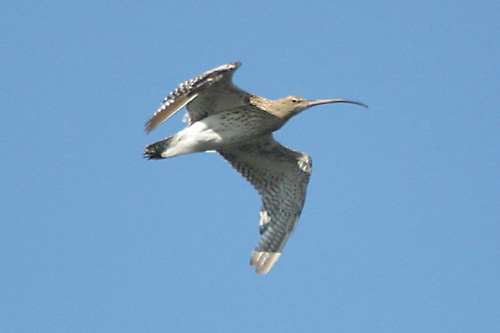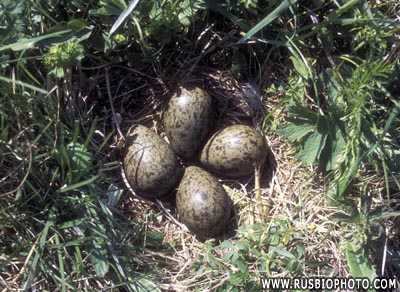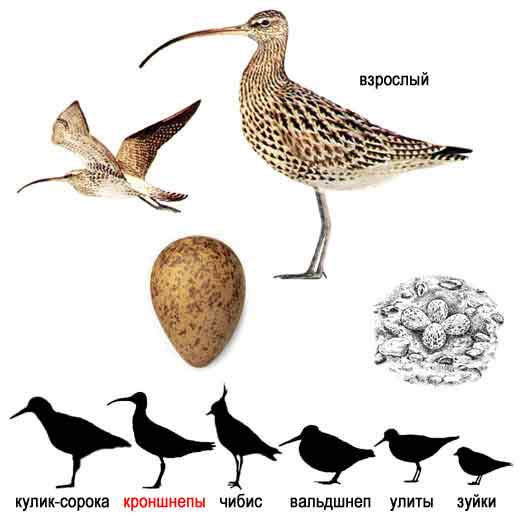The curlews, genus Numenius,
are a group of eight species of birds, characterised by long,
slender, downcurved bills
and mottled brown plumage. They are one of the most ancient
lineages of scolopacid waders, together with the
godwits which look similar but have straight bills. In Europe
"curlew" usually refers to one species, the Eurasian
Curlew, Numenius arquata.
Curlews feed on mud or very soft ground, searching for worms
and other invertebrates with their long bills.
They will also take crabs and similar items.
Curlews enjoy a world-wide distribution. Most species show strong
migratory
habits and consequently one or more
species can be encountered at different times of the year in
Europe, the British Isles, Iberia, Iceland, Africa, Southeast
Asia, Siberia, North America, South America and Australasia.
The distribution of curlews has altered considerably in the
past hundred years as a result of changing agricultural practices.
Reclamation and drainage of marshy fields and moorland, and
afforestation of the latter, have led to local decreases,
while conversion of forest to grassland in some parts of Scandinavia
has led to increases there.
The stone-curlews are not true curlews (family Scolopacidae)
but members of the family Burhinidae,
which is in the same order Charadriiformes, but only
distantly related within that.
Order: Charadriiformes
Family: Scolopacidae
Genus: Numenius
| English |
Norsk |
Latin |
| Long-billed Curlew |
Langnebbspove |
Numenius
americanus |
| Eurasian
Curlew |
Storspove |
Numenius
arquata |
| Eskimo Curlew |
Eskimospove |
Numenius
borealis |
| Far Eastern Curlew |
Østspove |
Numenius
madagascariensis |
| Little Curlew |
Dvergspove |
Numenius
minutus |
| Whimbrel |
Småspove |
Numenius
phaeopus |
| Bristle-thighed Curlew |
Alaskaspove |
Numenius
tahitiensis |
| Slender-billed Curlew |
Smalnebbspove |
Numenius
tenuirostris |
|
Curlew,
Storspove, Numenius arquata


Immediately after breeding it moves to coastal mudflats and salt
marshes. While resident in parts of western Europe, it winters along
the coasts of Africa and southern Asia as well as southern Europe.
It is the largest wader in Europe and has an exceptionally long,
decurved beak.
text ag
 ©
www.ecosystema.ru/
©
www.ecosystema.ru/
|










